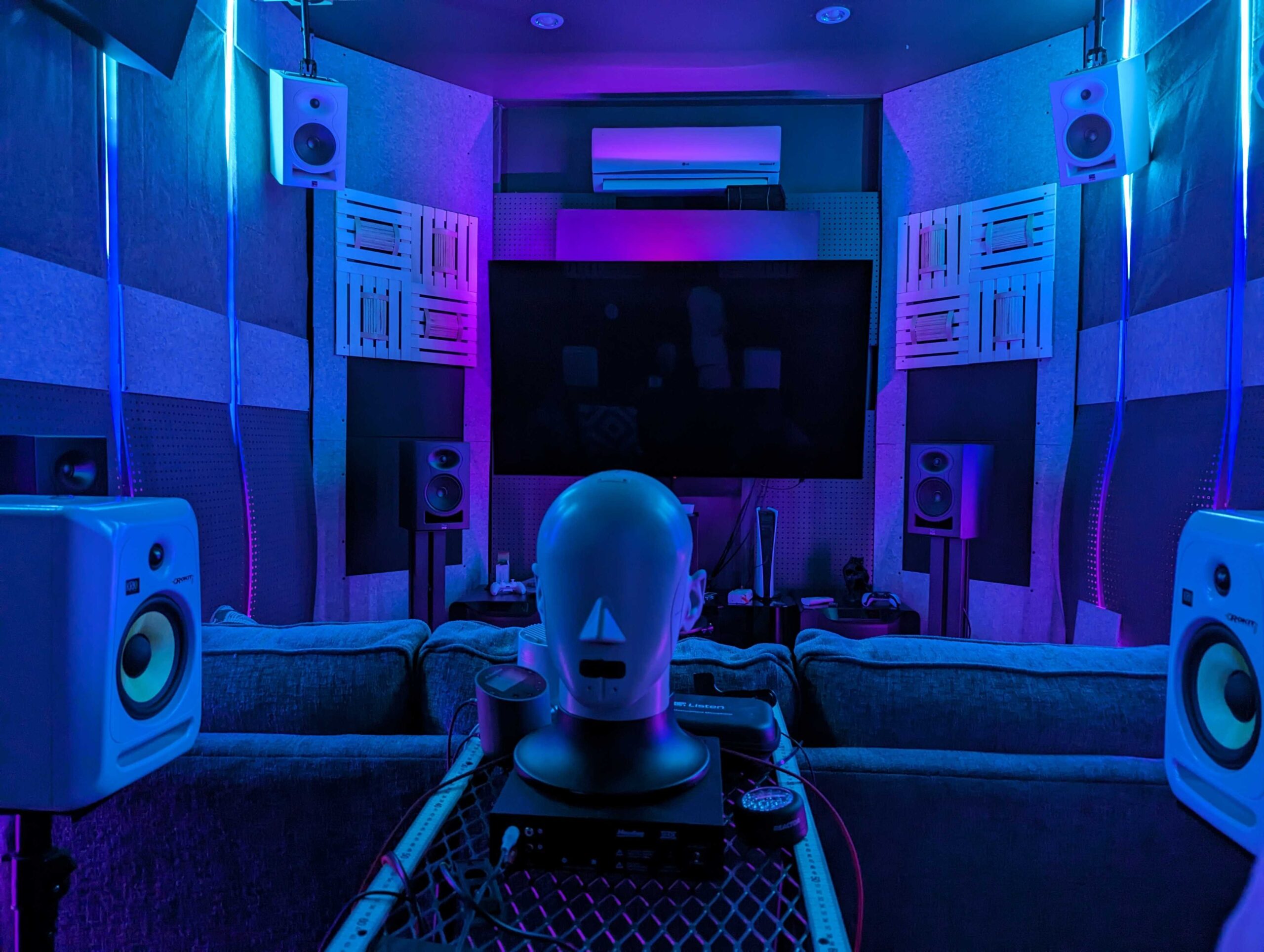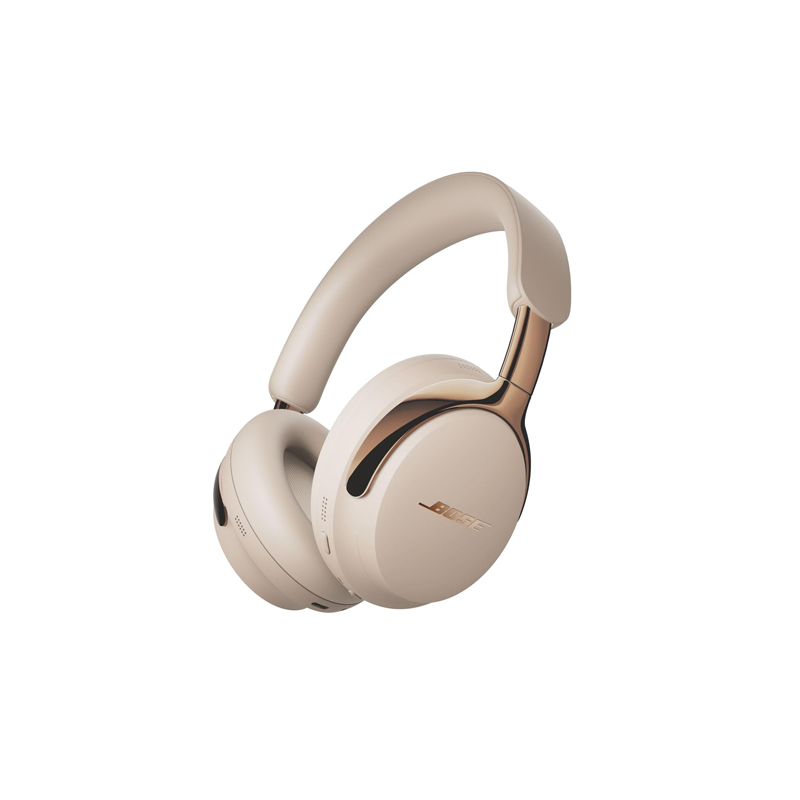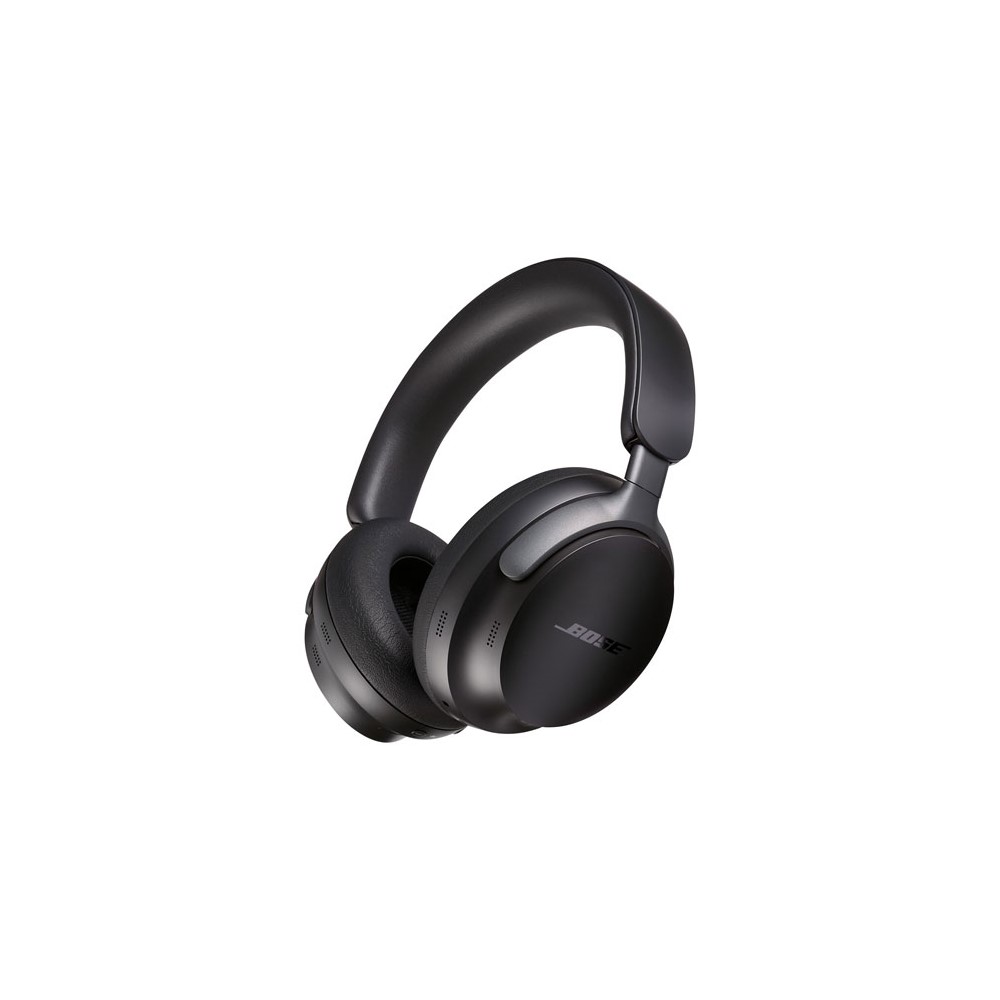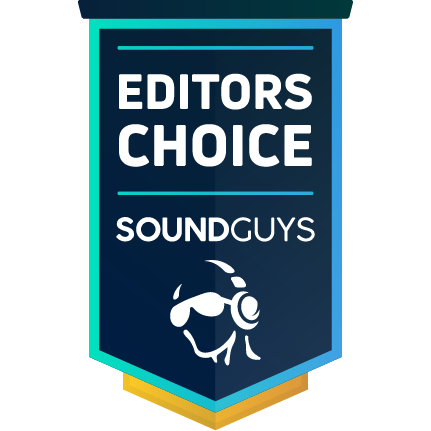All products featured are independently chosen by us. However, SoundGuys may receive a commission on orders placed through its retail links. See our ethics statement.
Best AirPods Max Alternatives That Actually Compete
We tested them all—here are the leading contenders for sound, comfort, and features.
October 8, 2025
Adam is an Editor at SoundGuys specializing in gaming headsets, flagship headphones, and earbuds. A lifelong fan of video games and cinema, he brings a sharp ear and passion for immersive sound to every review. Beyond hardware, Adam writes thought-provoking features and opinion pieces that explore how audio tech shapes our lives. Armed with a BA in Cognitive Science, he pairs technical insight with a love for music’s psychological uplift. At home, he still rocks his original Sennheiser MOMENTUM over-ears, switches to Bose QuietComfort Ultra on flights, and relies on Galaxy Buds2 Pro while out and about.
Don’t want to spend your entire wallet on a pair of AirPods Max? You’re in luck. We’ve tested hundreds of headphones, and on this page you’ll find the top contenders based on our results. We also ran a poll asking readers like you to pick the best alternative, and over 700 voted. The Sony WH-1000XM6 came out on top with 42% of the vote, followed by the JBL Tour One M3 at 32% and the JLab JBuds Lux ANC at 18%.
Compare table
Filter
- Compare tableProductVotes
- 16 total votes16 total votes
$200
8.4
7.6
8.4
6.9
7.7
8.0
9.5
7.5
9.9
9.0
9.0
- 0 total votes0 total votes
$449
8.4
7.1
8.7
6.9
7.9
8.0
9.7
7.5
9.4
8.9
9.0
- 5 total votes5 total votes
$450
8.3
6.8
8.7
8.0
8.0
8.0
9.5
7.0
9.9
9.0
8.0
- 17 total votes17 total votes
$80
8.3
7.2
8.1
6.7
9.5
8.0
7.5
7.7
9.9
9.5
8.5
- 8 total votes8 total votes
$300
8.3
7.6
8.5
8.0
9.0
7.0
9.0
7.0
9.7
9.0
8.0
- 4 total votes4 total votes
$429
8.3
6.5
8.5
6.9
7.9
8.0
9.5
7.5
9.5
8.9
9.0
- 4 total votes4 total votes
$218
8.3
7.0
8.0
6.9
8.5
8.0
9.5
7.5
9.9
7.5
9.0
- 0 total votes0 total votes
$699
8.2
5.7
7.4
6.9
6.8
9.0
9.5
7.5
9.5
9.5
8.5
- 6 total votes6 total votes
$289
8.2
4.8
7.6
6.9
8.9
8.0
8.5
7.5
9.9
8.8
8.8
- 1 total votes1 total votes
$130
8.1
6.1
7.3
7.5
8.4
7.0
7.5
8.5
9.9
9.0
8.3
- 0 total votes0 total votes
$278
8.1
7.3
7.7
6.9
8.2
7.2
9.0
7.4
9.1
9.0
8.5
- 4 total votes4 total votes
$449
8.1
6.7
8.4
7.5
8.0
8.5
9.5
7.0
9.6
7.0
8.0
Product chart
In the chart above, you can see how each of the headphones compares in terms of price and performance.

Here at SoundGuys, we’ve been testing audio products for over a decade. Our team comprises audio product experts who have tested hundreds of different headphones, earbuds, and speakers. Moreover, our team comes from diverse backgrounds and a wealth of expertise, including audio engineering, film production, journalism, podcasting, music production, and even touring musicians.
Everything we recommend results from our objective measurements and great subjective experiences. Ultimately, we want you to enjoy your purchase or, at the very least, leave our site with a little more knowledge about the inner workings of audio. To see why you can trust us with your purchase decision, make sure to check out our ethics policy.
To gather information about how well each of the earbuds and headphones work, we subject each product to a number of objective tests. We use a Bruel & Kjaer 5128 acoustic measurement system to test headphones and earbuds in our SoundGuys lab. The ear canal of the artificial head was created by averaging and smoothing 3D models of individual ear canal features from the MRI scans of 40 different people.

We perform the following testing to determine the best headphones and best earbuds:
- We run sequences to determine the best fit of the headphones, and if there are any manufacturing issues with the product.
- We measure the headphones’ performance and compare the frequency response to our industry-validated SoundGuys Headphone Preference Curve to give context to readers.
- To rate sound quality, we use the Multi-Dimensional Audio Quality Scores (MDAQS) algorithm from HEAD acoustics. These are virtual mean opinion scores as calculated by a powerful machine learning model based on the input of real listeners.
- We play several samples of shaped noise over loudspeakers to test noise canceling and record with our artificial head. We take samples with ANC on, ANC off, and with the headphones off the head. After subtracting the appropriate curves from each other, we can see how well the headphones block out noise.
- To evaluate microphone quality, we play pre-recorded spoken Harvard sentences from a calibrated artificial mouth in our test chamber, either with or without simulated background noises, simulated reverberant spaces, or artificial wind.
- To measure battery life, we play back music through the headphones or earbuds peaking at 75dB(SPL), a safe and realistic listening level.
In addition to objective testing, our team of audio experts uses each of the headphones and earbuds to evaluate the experience of using the product. By wearing the headphones in day-to-day use, we evaluate the comfort, noting any pain points. We also make sure to try out each of the features that the headphones have to offer, such as using the equalizer in the companion app.
Using a combination of subjective and objective testing, we score each product. To learn more about how we evaluate headphones and earbuds, check out our in-depth explainer on how we test.
Poll
Why aren’t you interested in buying the AirPods Max?
Related Videos
Best overall pick: Sony ULT WEAR

We pick Sony ULT WEAR as our best overall for wireless headphones because they balance long battery life, solid noise cancellation, and useful connectivity. In our standardized battery test they lasted 32 hours and 35 minutes, and the cans fold into a flat case for travel while offering a comfortable fit with wide 40mm ear pads — they also earned Best Battery Life, Best Over-Ear Headphones, and Best for Comfort recognition. The ULT WEAR supports SBC, AAC, and LDAC, offers Multipoint, and includes a wired 3.5mm option, giving flexible listening choices; note that there’s no USB-C audio passthrough. The headphones lean heavy on bass by default (the ULT button boosts low end), so we recommend using the Sony Sound Connect app to tame that setting. Our MDAQS context shows that the emphasis on bass affects the scoring profile, so EQ adjustments will help tailor the sound to your tastes.Sourced from Sony ULT WEAR review – SoundGuys.
Best ANC pick: Bose QuietComfort Ultra Headphones (2nd Gen.)


We chose Bose QuietComfort Ultra Headphones (2nd Gen.) as our best ANC pick because they prioritize precise noise cancelation and comfortable long-wear design. The cans deliver strong isolation and let you adjust ANC strength through the Bose app, plus a new spatial mode aimed at movie content. They’re lightweight for a premium set and include USB-C and analog inputs along with Bluetooth 5.4 and support for an aptX Adaptive family (including aptX Lossless in some cases), which helps in high-bitrate scenarios on compatible devices. The controls are capable though a bit confusing at first, so expect to spend a moment learning them. Overall, these headphones are designed for travelers and commuters who want top-tier noise reduction without a heavy build.Sourced from Bose QuietComfort Ultra (2nd Gen) review: Boring refresh? – SoundGuys.
Best Call Quality pick: JBL Tour ONE M3
We name the JBL Tour ONE M3 our best call quality pick thanks to its eight-microphone array with windscreens and robust signal processing that cuts wind noise and preserves clarity in office and street environments. The headphones pair that mic performance with a useful SMART Tx remote/transmitter that acts as a controller and a low-energy transmitter when needed, plus a slim travel case and comfortable faux-leather pads for extended use. JBL also includes features like spatial audio, ear detection, and customizable passthrough modes in the app, making these versatile for daily life. While the SMART Tx is handy, it’s an extra accessory to keep charged and carry. The Tour ONE M3 aims to be a full-featured ANC daily driver that also excels at staying intelligible on calls.Sourced from JBL Tour ONE M3 review: The next generation of ANC – SoundGuys.
Best Value pick: JLab JBuds Lux ANC


The JLab JBuds Lux ANC earns our best value pick by delivering long battery life, app customization, and respectable ANC at a budget price. In our battery testing they lasted 44 hours and 22 minutes, and the included app offers a 10-band EQ and adjustable ANC modes to tune the sound. Build and comfort are good for the price, and the foldable design and fast-charge support (about 10 minutes for ~4 hours) make them commuter-friendly. ANC performance isn’t class-leading, but the ear cups form a strong seal that helps isolate higher-frequency noise especially well. For buyers focused on getting the most features per dollar in wireless headphones, these are a strong option.Sourced from JLab JBuds Lux ANC review – SoundGuys.
Best Sound Quality pick: Bose QuietComfort Ultra


We pick the original Bose QuietComfort Ultra as our best sound quality option for wireless headphones because of its CustomTune calibration and support for aptX Lossless on compatible Android devices. The headphones create a secure seal with wide ear cups and angled drivers, contributing to strong isolation and a balanced listening presentation, and they also offer Bluetooth 5.3 with LE audio support. Battery life measured 27 hours and 37 minutes in our standardized test, and the cans include a useful travel case and a mix of wired and wireless connectivity. These headphones additionally earned recognition as Best for Android users for their codec support and Snapdragon Sound compatibility. If sound tuning and Android-focused high-bitrate options matter most, these are a compelling choice.Sourced from Bose QuietComfort Ultra Headphones review – SoundGuys.
Best for iPhone users pick: Master & Dynamic MW75 Neuro

The Master & Dynamic MW75 Neuro is our pick for iPhone users who want unique productivity features alongside premium sound and build. These headphones embed Neurable EEG sensors in the earpads to monitor focus levels and feed that data to an app, and the combination of lambskin headband, aluminum and glass ear cups, and removable memory-foam pads gives a premium, comfortable fit. A dedicated control layout includes a Siri-accessible button, and the Neurable app features gamified tracking that can help improve focus with practice. They also support aptX Adaptive over Bluetooth and include wired options for versatile listening. For buyers looking for innovation plus premium materials in wireless headphones, the MW75 Neuro stands out.Sourced from MW75 Neuro review: Headphones that can read your mind – SoundGuys.
Our verdict
Across the wireless headphones we looked at from brands like Sony, Bose, JBL, JLab, Master & Dynamic, and others, the Sony ULT WEAR takes best overall for combining long battery life, broad codec and connectivity support, reliable ANC, and comfortable over-ear fit, albeit with a bass-forward default that benefits from EQ adjustments.
If ANC is your top priority, the Bose QuietComfort Ultra (2nd Gen.) is the strongest pick for noise suppression and tunable cancelation; for call-centric users, the JBL Tour ONE M3’s eight-microphone array and wind-aware processing make it the clearest call headset. For budget-minded buyers, the JLab JBuds Lux ANC gives exceptional battery life and app tuning for the price, while the original Bose QuietComfort Ultra is the best pick for sound quality and Android-focused high-bitrate support; the Master & Dynamic MW75 Neuro targets users who want premium materials plus the Neurable brain-tracking features and tight iPhone integration. The remaining product we tested, the Nothing Headphone (1), stands out for its distinctive see-through design, IP52 water and dust resistance, and an extensive app EQ (including shareable QR codes and head-tracked spatial audio), making it a good fit for buyers who prioritize design, durability for light activity, and granular sound customization.
FAQ
-
On-ear rest on your ears, smaller and more portable.
-
In-ear (earbuds) fit inside your ear canal, most compact.
-
Wired can offer more consistent sound quality and no battery worries.
-
Wireless adds freedom of movement, Bluetooth features, and portability.
-
Over-ear headphones with strong ANC work best on planes and trains.
-
Compact earbuds are great for commuting and portability.
Higher-priced models usually have better ANC, premium materials, wider soundstage, and extra features.
Active Noise Cancelling uses microphones to cancel out external noise for a quieter experience.
Open-back designs allow air and sound to pass through, creating a wider, natural soundstage but leaking sound. Closed-back isolate better and have more bass punch.
No, it’s a premium feature. Multipoint is useful if you switch often between laptop and phone.
Yes, by reducing background noise so you don’t need to turn up the volume. But listening too loud can still cause damage.
Isolation refers to the ability of your headphones to block outside noise from reaching your ears. This might sound like active noise cancelation, but it isn’t. Active noise canceling uses microphones to pick up the sounds that are going on around you and then uses clever processing to cancel them out. In physics, it’s called destructive interference, and you can learn more about that in our article on how noise canceling works, but that isn’t what isolation is.
Isolation is simply having a physical barrier between your ears and the outside noises. Every time you stuff your fingers in your ears, you’re isolating yourself. You might hear certain loud noises around you, but for the most part, sounds are blocked out. A good pair of over-ear headphones can do something similar. They’ll cover your ears and block noises that would otherwise interfere with the music you’re listening to.
Not yet. While Bluetooth has become way better and more convenient in the last few years, it still can’t compete on a technical level with wired over-ear headphones. Sure, we might be a little biased against removing the headphone jack. Still, even our objective testing of the LDAC codec (which is arguably one of the top transfer methods currently available) revealed that Bluetooth falls short. Of course, you probably won’t have to worry about it too much if you’re over the age of 24 because our hearing tends to go a lot sooner than you might realize, but it’s still something you should be aware of. At least for now, wired headphones still reign supreme.
Over-ear headphones generally offer superior sound quality due to their larger drivers and better isolation, which minimizes ambient noise and allows for a more immersive listening experience.
Thank you for being part of our community. Read our Comment Policy before posting.
